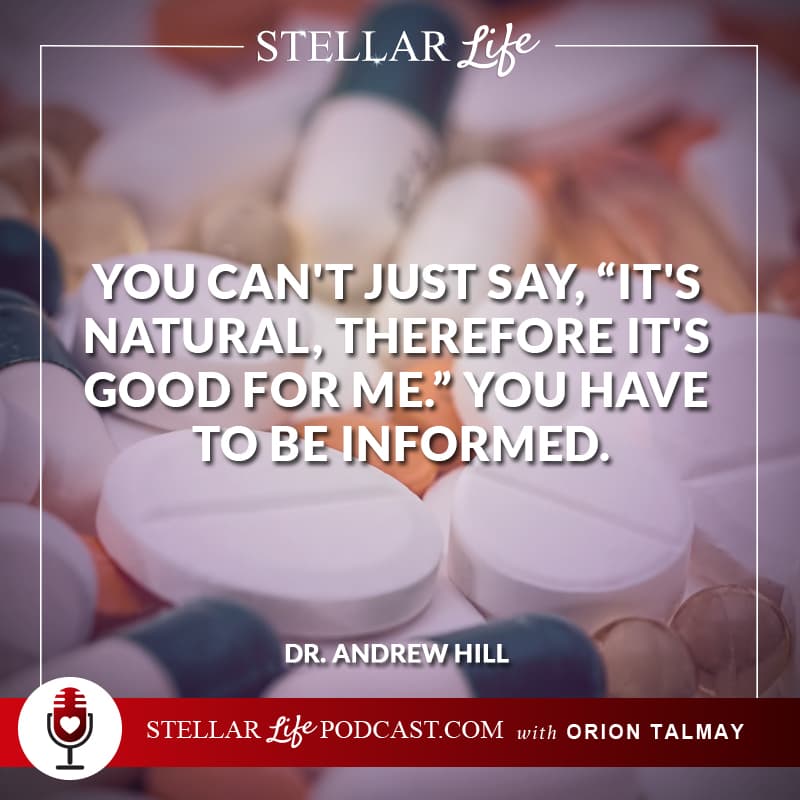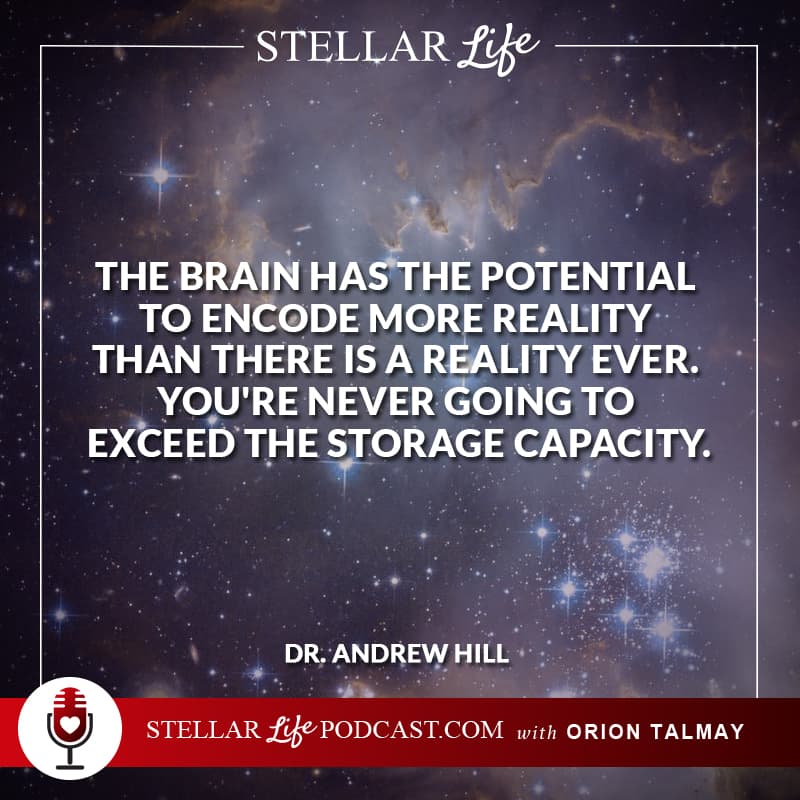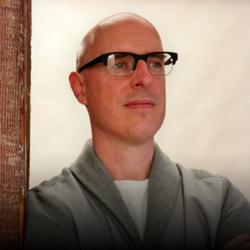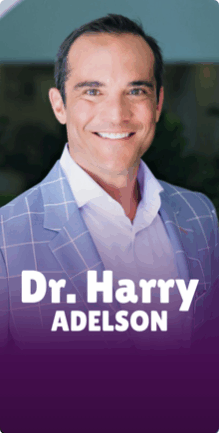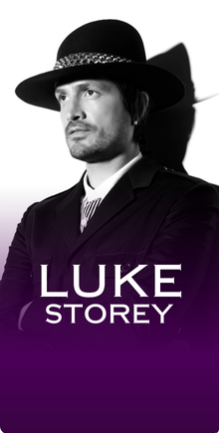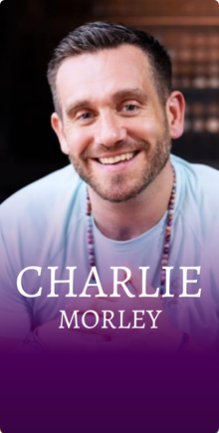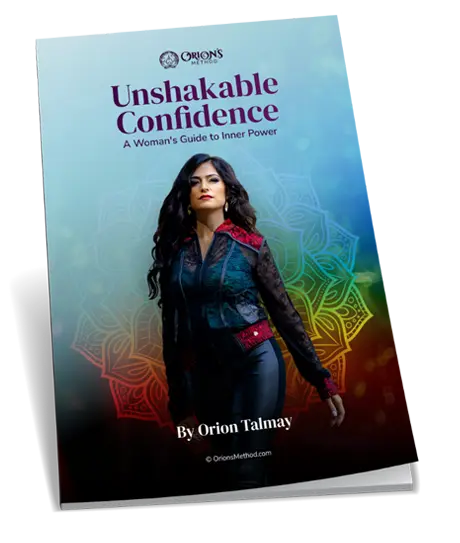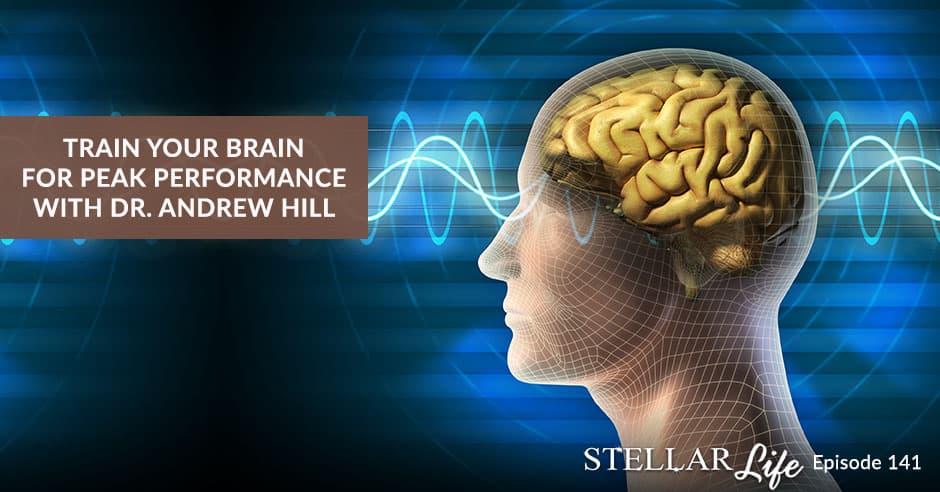
About Today’s Show
Andrew, welcome to Stellar Life podcast.
Thanks for having me. I’m happy to be here.
I’m so happy that you are here. We’re going to talk about one of my personal favorite topics, which is how to enhance our performance and how to improve our brains and all that good stuff. Why don’t we start by you sharing a little bit of yourself?
Professionally, I’m a Cognitive Neuroscientist. I teach cognitive neuroscience with a focus on gerontology or peak aging. Practically, I work in an area of applied neuroscience where I teach people to take control over their brain health and learn techniques like mindfulness meditation as well as do more technologically assisted things, biofeedback, neurofeedback on the brain, brain mapping and assessments of strengths and weaknesses of your skills. My calling is to help people understand the slightly mysterious things that are happening internally and have some sense of control over them instead of view it as a black box. We often get blamed or we feel guilty for things happening in our skulls, but we wouldn’t for having a broken shoulder or a torn knee or something that might limit us in some way.
A lot of the work I do is looking at how the brain supports those resources from a gerontological perspective. It’s across the life course and modifiable behaviors you can engage in to keep yourself aging well. Then for the biohacker community and everyone else who happens to have a brain, the approach is, “Let’s figure out what’s going on in there and get a sense of the bottlenecks and the resources,” and then we help people eliminate them, get rid of the limits that they’re experiencing typically. That’s the work that I do broadly.
Why do you think biohacking has become so big lately? Why do people suddenly start to get so interested in their brains and how to improve on it?
It’s a bunch of reasons. I think this isn’t all that different than the fitness crazes that have happened in the ‘70s, ‘80s, ‘90s and in the ‘50s when you had those belts that vibrated your butt. Now it’s personalized, almost genomic level pre-workout stacks of recovery schedules and sleep schedules and things. There’s a huge range in these iterations of the technology. The brain is now more accessible for biohackers. Functional medicine has exploded. People are looking at blood markers and metabolic things, which is a big piece of biohacking.
The technology for tracking sleep twenty years or 30 years ago used to be largely just a polysomnography. It’s a sleep study for two to four nights with stuff all over your head and wires in your face and shoulders chest. It was invasive and very expensive. It took special people to get any good out of it, let alone interpret it. Now you can do an adequate sleep study with relatively low-cost at-home gear. You can get rings and trackers on your bed that watch your heart rate variability and sleep stages. Data is becoming more accessible. Moore’s Law of Technology, doubling what is accessible at the same price point roughly every year or two has been happening in biohacking as well. Then we have things like electronic health records. The modernization of healthcare and information access, people are thinking more about, “My data, my records, my control, my genes, my 23andMe scans, my predispositions for certain diseases or medication responses or aging.” The data is becoming accessible and it’s dovetailing with yet another iteration in understanding more deeply what’s happening in the machinery we’re walking around with and taking more control over.
I also think that the amount of information that we have been consuming in this day and age is just going to accelerate. If people are not able to keep in with the advanced technology and learn how to learn faster, think faster and be able to receive more knowledge, then they’re going to be left behind. You already see it with the elder population, they’re a little bit behind on the technology. Our technology is advancing so fast that if you are not strengthening your brain, I don’t think that you are able to keep up.
There’s certainly some of that, that we have no more need. Technology is changing faster. People that enter college degree programs for high-tech and for computer programming other things, by the time they graduate, the stuff they’ve started learning is basically obsolete. They have to relearn what they’re learning to be as a learner or a consumer of that type of information and type of skill so that they can build additional skills in that vein over time, the domain expertise. I would argue that technology is distilling information and bringing it to people with domain expertise. We’ve had huge amounts of information and massive corporate databases for everything from payment profiles, purchasing, history, health and wellness things for 50 years. We’re just now starting to have personalized medicine because of integrated data and predictive algorithms for AI suggesting that you may have certain risk factors or certain medications may work. While we may need souping up to keep up with what’s happening, I would also argue the information that’s being presented to us- the pieces that we are consuming have the capacity for being much more relevant and much more efficient. It often isn’t. It’s often a noise or a flood of Facebook, Google, nabs and TV shows. They’re nonsense. It doesn’t have to be that.
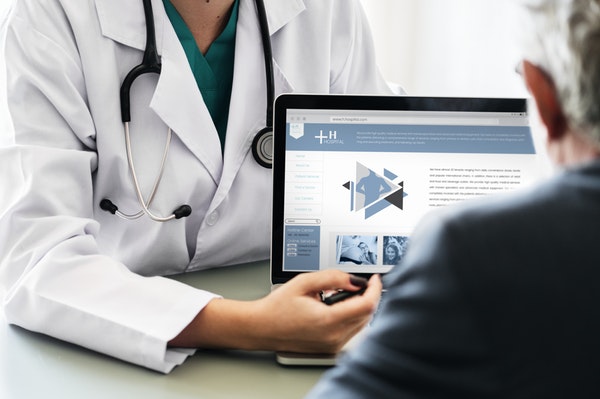
There is so much distraction with social network and people’s happiness levels are dropping. There are more cases of depression especially because of social media and the way it is designed to give you negative neurofeedback with all those techniques they’re using to stimulate the brain and get you addicted to the social media. People have to learn how to control their brain better. That’s where you come into the picture and you help people map their brains. Then you give them the tools to move on and deal with everything that they have to deal with in life.
Many of those things are an elaboration of a technological development. We’re using high-end EEG and databased sophisticated analysis across individuals but we’re also using techniques that are at least five or 6,000 years old and they’re meditation. We have some technologies in terms of hacking the brain that are quite ancient, anything contemplative or anchoring of the attention system. We’ll have a brain-building system, we’re using the brain and building it to some extent. If you use it specifically, then you build those resources. How we work is often a little sophisticated in saying, “Let me record a resting set of data of your brain. Then compare you to a database of a few thousand people and see how unusual you are.” This is often where people laugh. It’s funny to think about how weird you are but the breakdown in terms of thinking about how to brain map and how to use the information, and this is more philosophical, but the goal here is not to say, “Why aren’t you average? Let’s make you the mean, the average and ways where you aren’t average or a problem,” that is not the thought process. The thought process is to say, “Where are the ways in which are most unusual?” Sometimes patterns that show up in this particular way may suggest a resource limit here or the difference from typical here. A handful of those outliers statistically will give you a sense on a very high level of what might be going on. The brain mapping ends up being a hypothesis generator, a model generator about what is happening with your particular brain. You then form the sense of, “It seems like what I’m experiencing.” For instance, the patterns for ADHD are among the most valid, the most reliable patterns. There’s a combination of markers but the most robust is the ratio of the amount of theta brainwaves being receptive attention, memory and creative states over beta brainwaves, cognitive, focus, calm, attention stuff. That ratio at rest, when it’s above about two, two and a half in an adult means you’re an ADHD but reliably, 94%, 95% reliable predictions but still not one out of twenty. It’s not valid.
Looking at the brain maps, we say things like, “Here’s a pattern that might mean you’re a bit impulsive or you have difficulty falling asleep or having some slow processing, work, finding issues, an old injury, some mood stuff, stress response in terms of thoughts getting stuck or emotions getting stuck.” There’s a handful, maybe 50 things we would look at as big features. The process of neurofeedback is working with your coach, your clinician to understand what the data may be showing and then work together to evaluate, exercising the patterns you’re seeing to see if they produce the changes you’re looking for. That’s very iterative if we try something, adjust and try something and adjust. Together, you and your neurofeedback course will work to essentially gently exercise your brain in the direction that produces better performance, better sleep, better stress response, better mood, reduce seizures, better creativity better immune function, all features in the process of neurofeedback.
If somebody comes to your facility, what do they have to expect? What does the process look like?
There are a couple of ways to engage with the way we support biohacking. One big way is meditation or mindfulness. That’s very low tech and you have total access to that. What I mean by that is you’re carrying around the equipment to meditate all the time hopefully. We also don’t charge for the Peak Brain. Three of the offices, two in Los Angeles and one in St. Louis, have free mindfulness classes a few times a week. You can go and learn some techniques, sit down and engage and we don’t want to take your money for that. We won’t even take your name if you don’t want us to send you anything. Just come on, sit down, show up and practice. It’s often hard to learn to do meditation but it’s very technically straightforward.
It’s learning some of the techniques, not proselytizing. There’s nothing to believe in when you come and do meditation with us, it’s just technique. It’s getting some practice in the basics as well as getting some social support, “I’ll keep meditating because the other five people are still sitting still. I guess I’ll sit still for five minutes and meditate some more.” The social pressure of the meditation community is very useful. Having a touchstone to go back to every week or so and meditate at least once a week with the community is a thing that we’re providing as well as all of our brain training clients. All of our neurofeedback clients get private mindfulness instruction if they want to as part of their program.
For neurofeedback, which is the main thing we do, about three-quarters of our clients come in just for that. You come in, initially we do about a 90-minute visit. You sit down in a chair. We put a swim cap on your head and squirt it full of gel. Then you sit with eyes closed and eyes open each for five minutes or so and record resting baselines. You have to do that coming in without caffeine in your system, which is often tragically difficult. Things like Adderall and Ritalin need 48 hours to wash out, to feel their constraints but generally pretty straightforward data to get and that’s the baseline. That’s the qEEG or the brain map that we will compare to the population of people we have references for, for your age, and see how unusual you are. We sit down and go over the things and that hypothesis generation of model creation with you. It takes for half an hour to sit you down, map your brain in terms of a data recording. We also measure your executive performance. We will have you do an attention test that measures your ability to sustain your focus under a ridiculously boring and tedious task for twenty minutes.
In that time, you’re responding to simple low-key boring stimuli and you’re also ignoring stimuli or distractors. We’re picking up attention resources, impulsivity resources, visual resources versus auditory and getting grading of a handful of the raw resources that are supporting the creation or production of your attention moment to moment. With the attention test resources, the performance and the brain map physiology, those two things together give us a good sense of where the biggest bottlenecks are. Then we sit down and say, “These seem to be things that are worth working on. Do you agree? Would you like to work on them? What’s important to work on? What do want to do first? What are your priorities? How hard do you want to push?” Most of our clients will do a three-month program of three times a week for neurofeedback and for that, you can have caffeine in your system. You come in three times a week for about half an hour. We don’t put a full head cap on. Typically, we use a couple of ear clips and a couple of wires on top of your head. We can send you back to work without any evidence of stuff in your hair usually.
During that time, you sit and look at an animation or listen to music or do a little simple video game or watch a movie. In all these cases, you’re watching a stream of information, simple animations or a movie. Whenever your brain happens all by itself to do a little bit more briefly, for half a second, of what we’re asking you to do over in that training session, whatever trends in theta-beta ratio. If for half a second your theta dips and your beta climbs, which mean better executive function, the software then goes, “Good job, brain,” with audio and visual input. If the brain moves the wrong direction, the software withholds the audio and visual input. It goes, “Good job, brain.” “Nope.” “There you go, brain.” “Nope.” You have hundreds of stops and starts of these little streams so your car stalls out and then zooms ahead, stalls out and zooms ahead of you. A spaceship, it’s the same thing, or your Pac-Man eats dots or doesn’t eat dots or you’re working. Maybe for you, the hard thing for performance is studying for your GRE or something like that.
The number of neurons in our brain is larger than the estimate atoms in the universe. Share on XThat’s the one thing you just can’t manage to marshal your resources consistently for. You work on that task while you’re in neurofeedback and we’ll measure your brain cognitive focus resources. Whenever your brain gets a little more in the zone, the audio track you listen to swells in volume and when you drift away from focus, it drops in volume. Your brain gets applauded not only for building the resource moment to moment but for being on task when that resource is active. There’s this nice targeted work where you get faster benefits potentially in certain areas that you’re working on with doing task-based training. The process of neurofeedback is largely involuntary. You can’t control your brainwaves and they’re fluctuating all by themselves so moment to moment your theta goes up and down.
What we’re mostly catching are the trends that are already showing up and reinforcing them with more stimulus. The brain likes stimulus. Over the next 24 hours, maybe 48 hours after you train, there’s a subtle shift in the brainwaves in the direction that produced more stimulus in the session. What you end up getting is a little bit of a shift. The brain does a little more of what was asked yesterday, let’s say, for a day or so and your experience is a little subtle change in your focus, calmness, sleep, alertness, memory, creativity. You report in and say, “My sleep onset was better and I was more focused.” We go, “Great, that’s working. That’s what we expected. Let’s push harder and do it again,” or maybe we’ll push a little hard. You were wiped out in the afternoon, so you back off a touch or we don’t get the result we’re looking for. We try for sleep onset issues and we get a sleep onset delay instead of improvement. We adjust the protocol. It’s gentle enough that unless we keep cranking on your brain in the wrong direction, things don’t build up. We try things and iterate and try some gentle things, get some gentle responses going. Then after you’ve done it 20, 30, 40 times, you built enough of the resource that your brain is now practicing all by itself.
You’re building new pathways. You’re building more neural connections and you’re teaching the brain and training it to work better. You’re training it and rewarding it because our brains love rewards. You’re rewarding your brains by giving it a sound reward or a visual reward as well.
This is operant conditioning but it’s involuntary operant conditioning because the behavior we’re training is the brainwaves that just happened in the last 100 milliseconds. You can barely experience those, let alone control them. We’re gently shaping moment to moment your brainwaves up or down. In terms of shaping, this is not Pavlov’s dog, it’s Skinner’s pigeons. Pigeons already peck and Skinner rewarded them for pecking in certain ways. If you wanted four times, you first reward them when they peck once, and then they’ll only peck twice and then three times. Eventually, you shape the behavior where they’re pecking more in a certain direction. The same thing is happening in brainwaves. You gently exercise these things up or down and evaluate the subtle shift. You have a nice sense of how things are starting to unfold because it’s very gentle.
If we wear you out or push you too hard, we just don’t repeat that exact protocol or back off in intensity a bit. The results change so you become the person who is in-charge. You are saying, “This is working. That’s not working. I love this effect. Don’t do that. Last Thursday was amazing, let’s do more of that.” You’re dialing in what is working. We’re getting away from the theoretical understanding that the need to deeply understand your brain by using a very high-level model system of the qEEG mapping to come up with a bunch of hypotheses about what’s going on.
What happens to clients after they do all that?
Things like ADHD, anxiety, sleep issues and creativity, those are the low-hanging fruit for neurofeedback. Those are the easy things. People that work on the basic things like that, the regulatory things, sleep, stress, mood, attention, those kinds of things, we usually do at least 40 sessions in at least three months, but most people have a permanent change at that point. If you have severe ADHD walking in, you end up with maybe mild ADHD after three months. It’s mostly going to stay changed because now you’re using your brain differently and therefore, practicing it on your own every day so it’s being reinforced. It’s like going to the gym for a knee problem, getting the physical therapist to sort out your gait. Then every day you’re walking around in your normal gait so you’re reinforcing the new knee stability. You keep using the resources and they keep stable when you’re re-tuning or adjusting things that are in that category.
If you have brain injuries, if you have lots of stuff going on like developmental issues, you’re autistic, when there’s more tissue stuff like autism or brain injuries, the process of training seems to be at least twice as long. This is one of the few things that can make differences on kids with autism and in adults with autism. It’s amazing to see eye contact, language and things start to change. The bread and butter, the real nice reliable utility is sleep, stress, mood, attention, the regulatory basics. Most people get reliable results. I work in this way while we’re doing a few months at a time because it takes some time. Also, we won’t tell you when you’re done, you’ll tell us if your needs are met. I often do at least three sets of assessments, brain maps and attention assessments in that three-month period beginning in every twenty sessions or so. We usually get at least a couple of standard deviations of change in both the brain and the performance.
Have you seen something extraordinary where somebody went from dysfunctional to super crazy, amazing off-the-chart type of progress?
Anybody with severe ADHD is like that because they’re basically gifted but some of their gifts are double-edged swords and getting in their way or in some severe anxiety and creative kids or adults is one of those things. When you get rid of it, all the resources blossom profoundly. I’ve seen like self-stimming, no eye contact, no language autistic kids become verbal intelligent young people that graduated from their high schools in their normal class.

When I hear you, it seems like you have a big heart and there is a mission behind all the science and the technical aspect of it. It seems like you are passionate about helping people that’s why you have the free meditations in your facility. What brought you to learn this?
I’ve worked in a lot of mental health, a lot of human services. I started off working in group homes with profoundly retarded adults, often deaf, blind and retarded. Often many things are going on physically. These people using tactile sign have issues learning and often even walking. I saw very severe people and I worked for many years in that environment with other retarded adults. Then I worked in psychiatric environments with children, adults, geriatrics and alcoholics. In so many of these environments, even the typical psychiatric environments that weren’t super severe and many of them were, I didn’t see a lot of change in depression, ADHD, anxiety, seizures, trauma and all those things that were driving dysregulated behavior. I worked in a dual diagnosis unit for a while for a lot of alcoholics. These guys came in and there were 30 people in the unit. Yet every so often, one of them had schizophrenia. It was the classic drug abuse or mental illness. Mostly, it wasn’t. Mostly, it was people with some impulsivities, some anxieties and trauma. They had developed a maladaptive relationship with a substance or two as a way of handling it and ended up contributing to more dysregulated brain and performance stuff.
I love that you say it with no judgment. This is another layer, which I like. You’re like, “Those people, they had a trauma. They had to deal with life. They take those drugs and it messed them up.”
We have lots of unskillful ways of handling things. They may be unskillful but they still help us handle things. There are reasons we engage in things. No one wants to become addicted to things. To a large extent, people don’t become addicted to things. All those early cocaine studies and heroin studies on rats showing that if you gave a rat drugs versus food, it would sit there and administer drugs all day long until it died. Those were flawed studies. If you put it in an empty cage with nothing but heroin, sure it will use heroin or cocaine until it dies but if you put the rat in a rat playground with ratty friends and rat toy, it doesn’t use the drugs. It leaves them alone. Alcoholics with significant major alcoholism by definition, 95% of them become non-problem drinkers in zero intervention eventually. Humans have the ability to learn. Addiction or messed up relationships with substances, it’s just another form of learning. It’s different than just a messed-up form of learning. We can do that. Our relationships with things with stimulus can become compromised.
Our brains are so capable of rejuvenating. It’s not like if you damaged your brain, there is no way back. Maybe in super extreme cases but from my best understanding, our brains can always heal and improve.
It’s pretty amazing what they can do. We see cases all the time that defy our previous understanding of the brain. We’re finding now that the brain makes new neurons. In our entire life, we keep finding new regions of what’s happening. We find someone who has 5% or 10% of their cortex intact and still has normal function. The information density of the cortex is probably orders of magnitude higher than it needs to be to handle what we do with our brains most of the time. There’s this thought experiment, which is a little silly. I’ll break it down for you. We’ve got at least 100 billion neurons. We have a couple hundred billion glial cells, the support cells in the brain that are also computational. Let’s forget that glial cells are computational. Let’s just think about 100 billion neurons as the only computational unit in the brain. Every neuron in the brain can make processes and send them out and touch any other neuron basically. They’re heavily interconnected.
Let’s assume that neurons talk to every other neuron and let’s ignore the other complexity of information connectivity like recurrent connections, bidirectional connections, multiple connections between cells, all of which would make the math much higher on the connectivity. Just say 100 billion neurons connected to 100 billion neurons. Therefore the number of synapses, the connections, is 100 billion raised to 100 billion. That number is larger than the estimate of atoms in the universe. The brain has the potential to encode more reality than there is a reality ever. You’re never going to exceed the storage capacity.
Massive injuries every so often take out big parts of the brain, huge amounts. The brain structure reorganizes and increases the information density in the remaining tissue enough to make up the difference with a fraction that the tissue left. The reorganization signals, the plasticity, is a slow process in adults, most of the time. Every so often there seem to be things that can trigger it to happen or make it accelerate. Neurofeedback causes an uptick in plasticity. It’s one reason why we get changes in brain injuries. You get measurable changes in the plasticity factors in the brain when you start exercising the tissue directly instead of going through the body.
I got profound changes through the ancient methodology of brain training by going to Oneness University in India. I didn’t know but I self-diagnosed myself as ADHD because I was working with clients and it was hard for me to focus. After doing the processes that I did there, when I came back home, since then on I was able to almost zoom in on the client and having the whole world disappear and being there in this little bubble with my client. It was amazing. The more technologically-advanced method that I used was I went to 40 Years of Zen. Have you heard of it?
Yes. Dave Asprey’s weeklong neurofeedback program. It’s basically an alpha training program. It works I believe in alpha connectivity and synchrony. It’s a very intense program, five days of multiple training sessions a day. It’s not how I approach the brain. I’m much more about, “Let us assess your brain and change it over time.” I don’t believe the brain can make a change that’s permanent in five or six days of training. I do think lots of people experience profound things while doing that program because they get to get deep into their brain. I work a little differently because philosophically, I’m a little opposed to going in for a few days and making a change. I have personally a lot of experience with ordeals with shamanic experience, with ecstatic techniques.
Try not to attach too fervently to the truths that other people give you. Evaluate, be curious, be inquisitive, be mindful. Share on XTell me more.
Before I do, I would argue that doing a four or five-day 40 Years of Zen is closer to an ecstatic ordeal than it is to a true neurofeedback experience where you’re making a change over time. You’re breaking things up. You’re going deep in a five-day intensive but you’re not necessarily building tissue over time. It takes five weeks to make new brain cells, so you can’t make them in five days. You can reorganize the existing connections quickly but it’s not a permanent change in the same way that making the tissue is. The timescales don’t match but breaking through someone’s perspective, how their attention is working, how their stress response, their sleep is working briefly, can be very profoundly changing as well. I think there’s something interesting there.
Sometimes I feel like whatever you do in life, when you dive all in for an intense period of time, there is the potential of creating a long-lasting change.
There is because of the perspective shift and you often have to have a healing crisis then integrate the change afterwards in a voluntary and efficient way. It’s what I was getting at in terms of the ecstatic or the ordeal. There’s a lot to be gained. In my experiences in ecstatic dance, drumming, rhythm tattooing works, I have a shamanic tribal upbringing in that way. And those sorts of things, while profound, I’ve gained huge personal resources, perspective and development from doing one to two or three these things a year, but I do them for a few days. Ordeals aren’t sustainable. The joke is always you have to do your vacation and come back and have a vacation from your vacation because it was so exhausting or be so profound that you worked your body and your mind out so hard. I think there’s a place for that but I think that it’s hard to have that be the only way you approach.
It’s not the only way. When I did the Oneness journey, the whole ordeal was ten days and I got that profound change. Listening to you I’m like, “Because I’m a seeker and because I have always wanted to improve my brain,” like everybody else on planet Earth, there are hidden layers of trauma or whatever that we need to deal with. It sounds like a super profound way to retrain your brain to create those changes forever. It sounds great. It sounds amazing. Do you do neurofeedback every day for yourself?
Not for myself mostly because of a question of time and resources. I’m just building up an active organization. I’m still pretty busy. Most of my staff train three or four times a week. If you work at a gym and you had downtime, you would train when you had the ability. I’ve probably done a couple hundred sessions over the past years but I did a lot of training years ago and I haven’t done very much. I’ve probably done ten sessions this year as they develop new protocols and I’ll try them. I get migraines sometimes. Migraines are one of the few things if you can knock back nicely with neurofeedback but they often kick back up. They are a vascular process, not a cortex, not a brain cell process so you end up with some instability of blood flow. You have to work on that over time. I’ll do some training for those sorts of things. I had a relatively profound and permanent shift from all the first neurofeedback that I did. I’ll do a little more here and there but not really to achieve the big goals that I got in the first few months I was working on.
Can somebody heal nerve damage or any physical condition through neurofeedback?
They can. Some of those physical conditions in terms of being body-bound let’s say, I don’t know how to create the change, but we tend to. Someone came in with us with an arm that’s clenched up by their chest and a left leg that’s tight or something because they had a brain injury in the right side. They come in for anxiety, attention and sleep and they say, “Fix my leg while you’re at it.” I’m like, “Something might happen but I’m not sure.” I set expectations low. Then a couple weeks later, the physical therapist is jumping up and down because everything’s unclenching and things are moving again. That happens a lot where we have body effects. There’s a technique in Alpha training that causes a T-cell surge.
What’s a T-cell?
Killer T-cells are the immune cells that kill stuff in our body. T-cells are one of the cells that are suppressed when you have immunocompromised things like HIV. Dr. Gary Schumer did a study many years ago but published only a couple of years ago with HIV-positive population showing you can bring up one particular T-cell, CD4 plus cells which is a crucial cell dramatically using neurofeedback. I’ve seen this a couple of times too, I’ve seen big surges in people’s data doing certain relaxation therapy type of neurofeedback. We also work in the brain. I’m much more comfortable saying, “We can help when you have a brain injury. You have some seizures or you have some muscle tightness or something is going on because of old wear and tear, concussions, post-concussion syndrome stuff.” Those are useful things to tap with neurofeedback and they often change very rapidly.
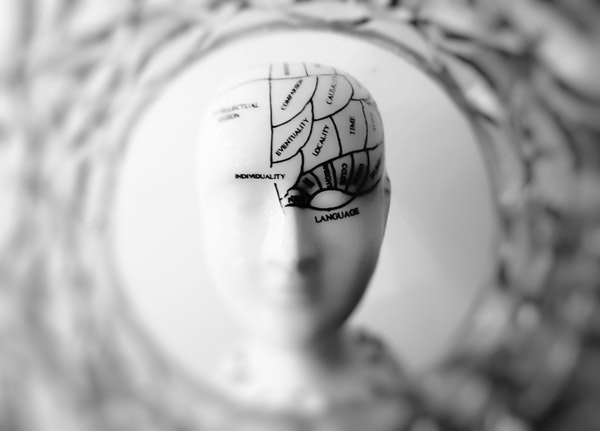
While someone might want a significant old brain injury worked on or major things in the body, it might change, I don’t know. That being said, I have clients that are pure body complaint clients. I have a couple of clients with EDS, Ehlers-Danlos Syndrome which is an issue of collagen. As far as I understand it, the collagen in which is involved in most connective tissue and most tissues in the body isn’t made properly in Ehlers-Danlos Syndrome. The response is hypermobile joints, a long body that has different tone a little bit to it and often a great deal of deep chronic lifelong pain. I have been able to very successfully dial down that pain in people with EDS, people with spinal fusions, people with major chronic injuries. You can work on body pain especially chronic pain by going after the brain.
What about Alzheimer’s?
Alzheimer’s is one of those things that once you’re symptomatic, you probably have too much brain tissue loss to do a great deal with neurofeedback. However, there are approaches, this is another hat I wear as a gerontologist. There are good approaches, emerging science and emerging techniques that suggests that Alzheimer’s may not truly be what we consider a disease process but more like a regulatory process gone awry and it may be reversible. There’s a program called the MEND program, the Metabolic Enhancement for Neurodegeneration by Dr. Dale Breseden. Dr. Breseden’s MEND program has been renamed The ReCode Program or Bredesen Protocol. They are variants of the same thing. They will measure 35 or 37 metabolic factors: cholesterol, homocysteine and hormones.
Bredesen’s idea that when seven, eight, or nine of these factors get out of whack enough to trigger a regulatory process, that strips synapse away. That’s a healthy process that usually protects the brain when we’re in microbial environments. An example is an amyloid. Everybody knows amyloid as the big plaque builder in Alzheimer’s. It’s the big bad, Amyloid-beta but it’s not. Amyloid is an anti-microbial part of your innate immune system. It keeps your brain from getting microbial infections. There’s a version of Amyloid you can create that makes you more “prone” to Alzheimer’s as well as atherosclerosis called ApoE4. If you have ApoE4, you’re more likely to get Alzheimer’s. ApoE2, you’re much less likely to get it than average. It confers risk of oxidation of fats and more atherosclerosis, other issues.
It turns out that we thought this was all about pro-Alzheimer’s and bad fat metabolism, the bad brain essentially. You look at populations in some primitive areas mentally where they’re microbial dirty. Papa New Guinea is not as “clean” an environment as the rest of the world. They’re incredibly high ApoE4 status and no one gets atherosclerosis and Alzheimer’s. They have a high starch diet consisting mostly on tubers. This is a mismatch with an understanding of how these things work. It looks like amyloid protects your brain from stressors like microbes, but maybe also for things like high sugar and other oxidation. If you put yourself in a wealthy developed environment without microbial risk, all the protective factors handling stress strip out tissue. If you had a high amyloid brain and you live in Papua New Guinea, you would live longer and have more intact brain tissue. In a high-sugar wealthy environment, it strips out the tissue. It’s a regulatory process, a synaptic plastic balance in the brain according to Breseden, that’s like the osteoblast balance in the bone tissue that dynamically keeps the bone tissue dense enough for your exercise, your body weight.
The same thing is happening with synaptic density according to Breseden. It’s a compelling idea and he takes people. There are lots of case studies in his papers. He assesses their metabolic status, all these factors. He addresses them and their hippocampi regrow and they check themselves out of memory units and go back to work, some of them. It’s a cutting-edge thing and it’s tractable. Alzheimer’s appears to be tractable using these metabolic approaches. In this 10,000-foot view, there’s a lot of hope here. It’s also hope for the younger people who don’t yet have it. You should be doing things to minimize blood sugar spiking and other risk factors.
It’s pretty amazing what the brain can do. We see cases that defy our previous understanding of it all the time. Share on XI wanted to talk to you about brain foods. Let’s start with all the bad for you brain foods and then move into the amazing for you brain foods.
There are a couple of categories in terms of what’s to avoid. It’s better to avoid the bad things than it is to worry about getting too much of the good. If you can avoid all the major risk factors, your brain will be fine. You should feed yourself good quality food, but the bad things are much worse and will take you down faster than the good things will build you up. It’s important to manage that risk in terms of long-term.
What’s the biggest risk? Sugar?
That’s the number one. Sugar oxidizes and rips through tissue, it accelerates Alzheimer’s, Parkinson’s. It causes metabolic syndromes. It’s a major problem. The other big thing is fats, you want to have good fats. Meaning, maximize Omega-3 fatty acids and minimize Omega-6 fatty acids. Most Westerners have high-grain diets or meat fat and grains. Therefore, most of the fats they are getting are Omega-6 and they need to bring the Omega-3s up and the Omega-6s down until they’re at least one to one. That will reduce inflammation and reduce the likelihood that the fats incorporated by the brain cells will be oxidized. If they’re Omega-6 fatty acids, the rusty fatty acids, they get in the brain cells and fall apart. The brain cells don’t last that long. If they’re Omega-3 fatty acids, the fatty acid being incorporated into the tissue is much more robust and resilient and don’t oxidize nearly as fast as you get in cell signaling.
What are Omega-6 rich-foods that we need to avoid?
Grains and grain-fed meat are right up there. Some nuts are high in Omega-6s. The highest Omega-3 in supplemental form will come from things like fish oil or algae oil. The brain is made up of about two-thirds DHA, one of the Omega-3 fatty acids, at least at one point in life. It’s far lower when you’re an adult. When you’re a developing kid, it’s two-thirds DHA by mass, the Omega-3 fatty acid. You can get DHA from the seafloor, from algae. The krill eat the algae and the fish eat the krill. We often get the fish oil from the fish, but you can go right to the source and go to the algae and get the DHA. You get a high-quality source.
I love supplementing with E3Live and spirulina. Blueberries are amazing for your brain. Omega-3 fatty acids, I supplement with fish oil. I like Brain Octane Oil, MCT oil, coconut oils. What’s your take on brain drugs, smart drugs?
I think that true nootropics are a good idea and interesting to take but most things in a category in the popular biohacker culture now are risky at best and foolish often. I think that the category of things that are truly nootropics is a very small list. The original term, nootropic, had to do a lot with protecting the brain. The category was defined as things that improve brain health and performance long-term without appreciable risk. There are no side effects and they manage it once it showed up. All the nootropics were involved with recovering from brain injury, intoxication, alcohol, oxygen deprivation or something else. They had this pro-brain health, the pro-aging thing that’s very low-risk factors, they’re very easily tolerated. Those include things like Piracetam and the other early Racetams, Oxiracetam and Aniracetam. It includes herbs like tyrosine, which is the dopamine precursor and carnitine, which is the raw material of the cell, the mitochondria use for energy.
There are a few other things that are good examples of that. Things like Modafinil are not, they are extremely risky for some people. It’s not risky for a lot of people. Also, the attention benefits from Modafinil often are extremely weak compared to other things, the risk-reward. I’m getting into the concept here that if smart drugs like Modafinil, like Adderall, there’s a side effect profile to these drugs. If you’re trying to biohack, trying to take your performance above your baseline and there are no massive deficits, you shouldn’t be dabbling in smart drugs where there’s a downside. You should be only using true nootropics where you can gradually build strategies and keep iterating your performance up.
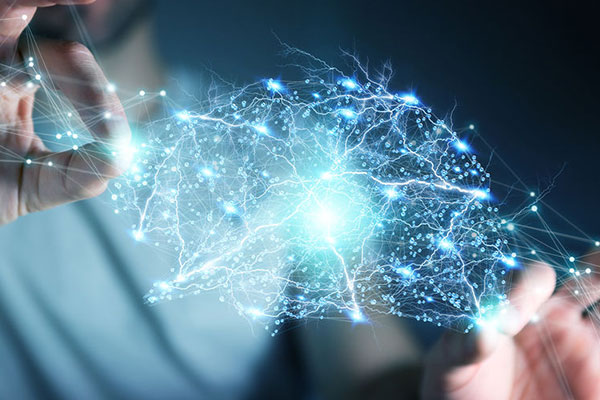
I took Modafinil for three weeks as prescribed, one pill a day in the morning by a doctor and woke up with head to toe body covering hives. I was in the hospital for weeks with a histamine reaction from the Modafinil. It turns out if you have a history of ADHD, the side effect profile from Modafinil is several times the background rate in the population. Silicon Valley guys, Dave Asprey, he had an article talk about how you have a Modafinil deficiency because everyone needs it. No, you don’t. If you’re a jet pilot, if you’re a narcoleptic, maybe you do. Wouldn’t you rather hack your sleep, get the high quality and then manage without that drug, because there is a side effect risk.
While it’s not a huge risk with a few percentages of people who have massive effects on these drugs like Adderall and Modafinil and things, it’s still a risk. We don’t know enough about this compound, especially when you’re getting into research compounds and random stuff from Russian pharmacies. You don’t know enough. The strategy needs to be a little saner. Pick things where the history is quite old, the benefits are known. It’s got a lot of supplements, herbs, amino acids and vitamins that are extremely well tolerated and very good for the brain. We’ve mentioned a few of them that are critical.
Mention more.
Vitamin D is huge for the brain. It’s huge for the body everywhere, but every tissue in the body is a Vitamin D receptor. You should be using Vitamin D. Everyone should be having good levels of at least Vitamin B6 and B12, but I can’t tell you about forms because there’s a lot of individual metabolism in Vitamin B. It makes a difference for cognitive performance that you dial in the right versions of Vitamin B. For biohackers, it makes some sense to get a methylation analysis on your genes and figure out which metabolic pathways and neurotransmitter turnover might not be lubricated well-enough because of methylin problems. Then give yourself the right B version that fits into the chain there and doesn’t stress out the weak link in your methylation chain. Maybe it’s already methylated, maybe it’s not over methylated if you make too much, who knows.
You can figure this information out now and that’s why we’re taking control because we can. We’re realizing years ago, doctors told you what to do. You thought they were God. We had a massive epidemic in this country of sterilization and forced eugenics in the ‘50s of people who were mentally ill and retarded because of the doctors saying, “Your son is retarded and therefore we’re going to sterilize him and his healthy sisters,” who was fifteen years old or whatever. They would do campaigns of sterilization across families. We were doing that in the ‘50s in this country and it was just top down, “Do what the doctors said, believe what they said.” In the ‘60s and ‘70s, it was the same thing, “Believe what the doctors said.” In the ‘80s and ‘90s, a little less so. Now, everyone is their own informed person, has Google, has WebMD, digs in, has the digital record of their health record. Maybe they’re biohackers and they’re tracking their sleep, their body fat. Everything from health and performance biohacking through true illness and fixing things, biohacking is now accessible and it’s accelerated.
It’s more a question of what information would you like to look at? Which set of tools would you find interesting or the risk-reward? You might want to go and you contrast-laden MRIs which are radioactive bearing to see what your brain metabolism is. You might want to do an EEG, which is non-invasive. You might want to do a cheap body fat scale from Amazon that isn’t perfectly accurate but shows the change in body fat versus going and spending $500 for an intense electro-measurement, float tank. There’s a whole series of things you can do to get precise measurements. You don’t need that, you have access to good enough data because of the change metric. The sleep trackers that do HRV, they’re not that accurate but the change, your heart rhythms are stable enough, they show the change in your sleep. We’re getting good information metrics and some sense of how our brains and bodies change. We’re not yet getting a sense of what it all means and some way to take control of that. To some extent in the biohacking world, we’re all still out in Wild West land. We shouldn’t be there in nootropics. The risks are too high. We’re getting some random chemical from some other country where the synthesis route was well-controlled and it sold lead and cadmium.
The brain has the potential to encode more reality than there is a reality ever. You're never going to exceed the storage capacity. Share on XWhat about those online brain supplements from different companies that are made in the US?
There aren’t very many made in the US. I have some persons who say, “I helped design one of the blends.” TruBrain is a blend that I was involved with creating initially. I’m not involved with the company at all at this point but I have some biases. Alpha Brain is also on its product that came a little bit before TruBrain. They’re very similar. TruBrain has Racetam plus Citicoline-based with other things.
What about CILTEP?
I’m not sure how I feel about the ingredients in CILTEP and I’ve done some analysis of them. It’s an interesting product and I think people get a lot out of that. I think those sorts of things are in the realm of true nootropics, CILTEP, Alpha Brain, TruBrain. Those are all true nootropics because their ingredients are things that are full of risks.
What about Qualia?
Qualia has interesting compounds. Daniel Schmachtenberger who’s part of that Neurohacker’s Collective has been on my own podcast. I have tried some Qualia. I find Qualia personally strong in terms of ingredients and so I don’t like it personally as a supplement stack but it’s an interesting blend in terms of the design. I’m most impressed by what he was able to squeeze into the design.
Have you heard of Accelerall?
Is that one of the silly ones that have its own branded name Racetams?
Yes.
It’s on Amazon. If that’s what I’m thinking of, they’ve made up a few words. I could be wrong, but some of the ingredients were not real compounds. The short answer is if the company has a blend of ingredients, you’ve got to figure out what the ingredients are. I have a real hard-line rule, you should never buy anything that obscures the amounts ever. No proprietary blend. That’s nonsense. It means they are putting in what they want to put in that list of things and things are fairy dusted, little tiny amounts they can say it’s a label or they use a lot of the cheap ingredient, not much the expensive one that’s buzzword compliant in the market these days. You have to know what you’re getting.
This is why I help TruBrain because it’s like eight things, it’s not like seventeen million things and they’re all very hot toast. You have to know what’s going on. You have to control this. You don’t want to buy into a product. You want to buy into an approach. That includes taking hold of your own health. You can’t do that if you don’t know what’s going on in your blend. I think that most people in the field hiding their ingredient amounts on their blends are doing it for reasons that would not help the consumer. It’s not about their business because it stops the best thing since sliced bread and they want to make sure they can make some money off of it. It’s not usually for that reason, because they are not making the product as good as it looks on the label. This is a way of hiding that. Don’t use things with proprietary lists that hide the amounts of individual ingredients. It’s a very strong rule that I have.
Beyond that, stay away from things where the ingredients aren’t well understood. Even if they are understood, you might find yourself a little bit in difficult straits. You have to do some research. For instance, Piperine, black pepper extract is in a lot of things. You can buy turmeric supplements and they usually come with black pepper extract in them because turmeric is poorly absorbed by the body and the black pepper extract suppresses the liver enzyme which breaks down the turmeric, so it’s absorbed better essentially. It’s oversimplifying but that’s what happens. That liver enzyme suppressed by the Piperine is involved with metabolism of most psychiatric medication. If you take your turmeric and Piperine to be healthy because of its anti-aging thing and you’re on a lot of meds, you start getting massive effective doses of these meds in your system and you’re having side effects.
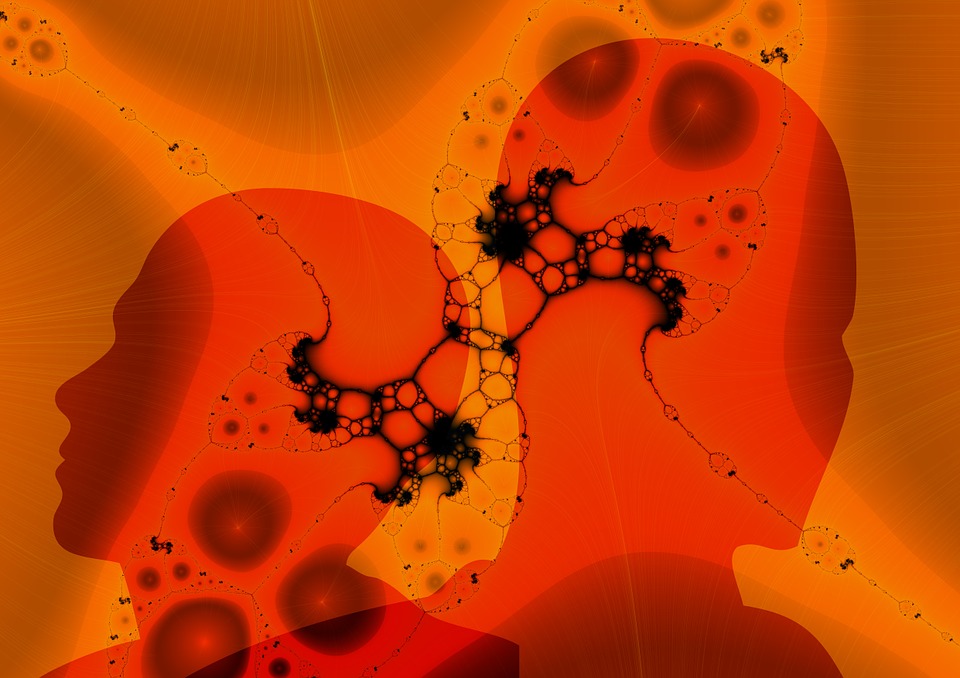
You can’t just go, “It’s natural, therefore it’s good for me.” You have to be informed. You have to go, “What’s this compound? What does this do?” This is another reason why having proprietary lists does not make sense. You need to be informed about everything going on. The reason why TruBrain, Alpha Brain, Qualia, the reason why these things are successful while they’re a good idea from a business perspective and a product perspective is because they are curation play. When I designed TruBrain, when Daniel and his team designed Qualia, we dealt with a great deal of energy, effort, science, time and spent thousands of hours exhaustively figuring out what was the best approach in our scientific perspective for biohacking.
I know Daniel. He’s a genuine person.
He’s genuine and he’s a deep thinker. He cares about this stuff, not the product buys per se. The reason he’s doing this is not that he wants to build a supplement. The reason I helped TruBrain wasn’t because I thought we need a supplement. It was because, “There’s a Wild West out there of slightly shady things. You don’t know where they’re coming from and you don’t necessarily know what they are.” The curation plays like Qualia, TruBrain, Alpha Brain are to cut through the noise and keep people safe places to start. The other thing I would say is you can go to random websites and find interesting things that you read about that you want to try, but make sure for instance that the website has a certificate of testing. They can tell you that particular batch, they are willing to share the certificate with you that 5,000-pound Piracetam they got has been tested for no lead and no cadmium.
Because it is a Wild West, the good vendors have risen up and will provide third-party certificates of purity for all of their products if they’re manufacturing them. You should call TruBrain and be like, “I want the current batch,” and they’ll send it to you of testing search that comes through for every compound going in. You can go on the website for most of the products that are big warehouse vendors that are good, and each batch will have a cert you can download to look at. If you want to start going through the Wild West and be a little brave, you can do stuff like that. If you want just to say, “No, I want to try some things,” there are these four or five pre-mades out there that are nootropic stacks like Alpha Brain, TruBrain, Qualia, CILTEP. There are a few other good ones but those are I would say those are the four quality leaders in the field to a large extent, the ones I know the most about. I know all the principals involved and I think they’re all genuine people that are good scientists that care about what they are doing. No one just decided to make a quick buck. There are many easier ways to make money than building a supplement stack especially with a path to riches.
There are lots of ways that you can take control of your health. The process and the path is going to be a little bit different for most people. For instance, the best diet would be one that is low carb, high fat keto-paleo-primal-esque and that’s great. It’s probably true for most people, but what if for some reason, ethically, biologically, whatever reason you don’t eat animals? Then you can’t do that diet. There are ways to achieve the same health results of minimizing blood sugar spikes, getting enough high-quality fats, that sort of thing in your diet. You have to dial it in for yourself and figure out what the decision criteria are, what’s important to you. With any of these things, diet, exercise, nootropics, supplements, smart drugs, biohacking in terms of watching all your sleep, energy, exercise and everything else, with all these things you could easily get orthorexic, rigid, where you’re like the person who cares about the data and doesn’t understand if they look fine in the mirror, they’re healthy and they’re still reaching for that crazy thing.
You have to be flexible, you have to be informed. You have to not believe the hype. The stronger a nootropic, smart drug or supplement company is saying their stuff does amazing things, you have to feel cautious. This is still an area that’s not well-understood and so no one has the truth for you. You have to weigh reality and try it yourself. The more somebody tells you they have the truth about your brain, the less you should believe them. Everything’s information and you should learn from it and try to understand. As a meditation teacher of mine, Matthew Brensilver would say, “You know your thoughts have led you astray when you reach a conclusion.” Try not to attach too fervently to the truths that other people give you. Evaluate, be curious, be inquisitive, be mindful.
This was fascinating and I am so grateful for everything that you shared with me and with the audience. I’m sure they will want to know more about you and how to reach you and how to contact you. How can they do that?
You are welcome to check us out on the website at PeakBrainInstitute.com and our social media on Instagram and Twitter is @PeakBrainLA. We’re on Facebook as well. I encourage folks to check us out. We would love to hear about your particular brain questions. We also have five offices at San Diego, Orange County, a couple in Los Angeles and St. Louis and the big offices all have free groups. Folks are more than welcome to come without any charge. We decided to give people in this podcast a discount if they want to get a qEEG or neurofeedback. They can mention your podcast and we’ll give them a slight discount that will save you a few hundred bucks. It’s 10% off the first package for services you sign up. The undiscounted brain map is $1,200. The training programs for three months which include a lot of training, 40 sessions plus a bunch of maps are about $4,000. You can save $400 on that program with a discount, which is pretty nice. We would love for folks to come to participate in our groups and get control of your brains. I hope it’s clear. This is a mission for all of us at Peak Brain as much as it is a business. Our goal is to give everyone access to technology.
If you love the idea of doing neurofeedback and deep biohacking but you can’t get the tech together or the funds together for a professional, come to meditate or go to the website. The Peak Brain Institute website has a downloadable tutorial on a meditation practice. It’s a twenty-minute practice to give you the basics so you can start digging in and grabbing control of your brain health and performance right away. There’s no reason not to. You’re carrying around the gear you need to do basic brain-building with mindfulness meditation. The gear is around with you all the time, you might as well learn to use it a little bit more.
Dr. Andrew, thank you so much.
My pleasure. It’s nice to speak to you, Orion.
